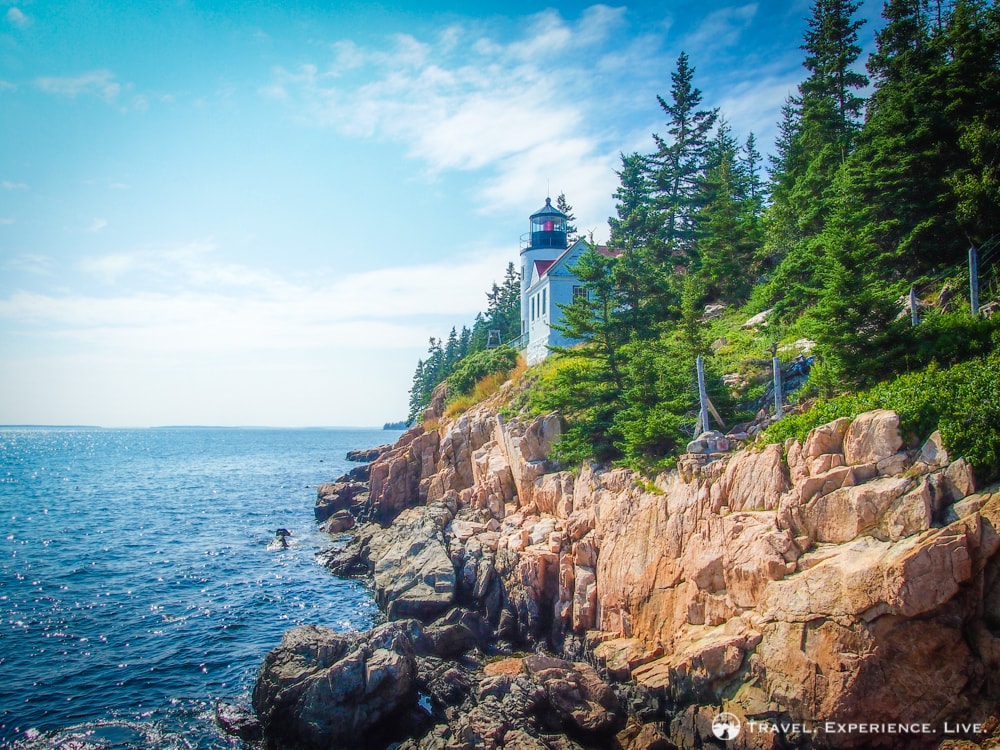Top 12 Best Views of the Tetons (in Grand Teton National Park)
Although it’s a relatively small national park, Grand Teton packs an undeniable punch.
Encompassing the sprawling Jackson Hole valley, numerous glacial lakes, a meandering section of the Snake River, and the majestic Teton Range, it’s a diverse and, above all, incredibly scenic park.
Wildlife abounds in Grand Teton National Park, from black and grizzly bears to moose, elk, bison, and birds. The park’s animals are one of its top attractions, drawing in visitors from across the United States and abroad.
Another major drawcard are the many breathtaking views of the Tetons you can enjoy all throughout the park.
Below, you’ll find several of the best places to see the Tetons in Grand Teton National Park, including roadside overlooks, hiking trails, and lakeshores.
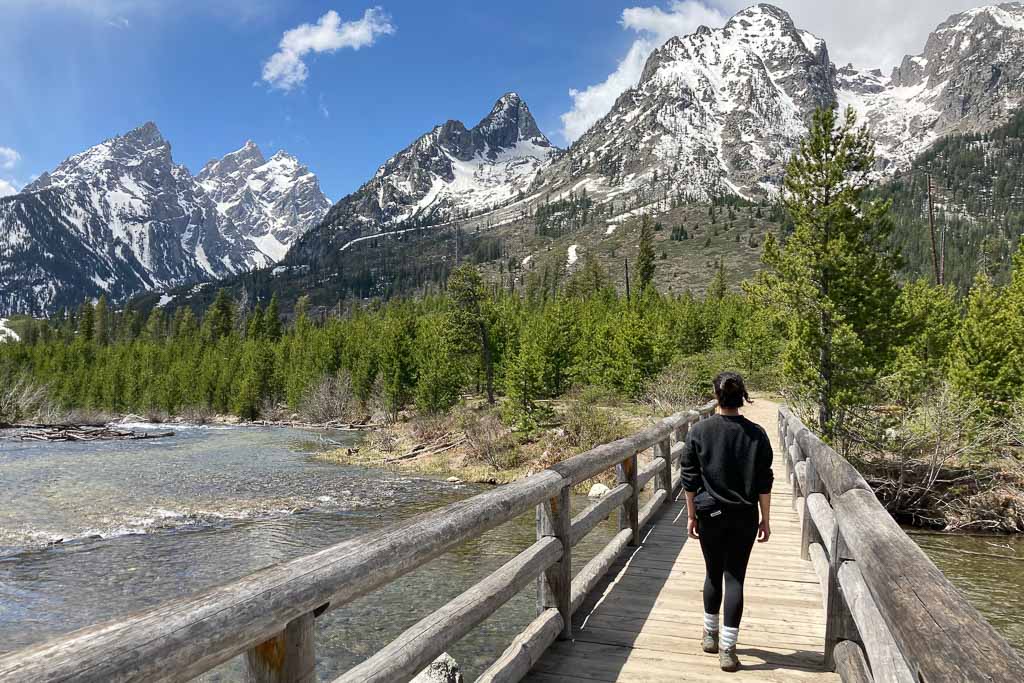
This blog post about the best views of the Tetons in Grand Teton National Park contains affiliate links. You can read more about our Terms of Use / Disclosure here.
The Teton Range, One of the Youngest Mountain Ranges in North America
Few U.S. national parks have such striking mountain views as Grand Teton National Park. This is because the Teton Range is one of North America’s youngest mountain ranges, boasting steep slopes, deep canyons and sharp peaks.
Located at the so-called Teton Fault, the Tetons tower over the Jackson Hole valley, rising abruptly from the flat valley floor. The fact there are no foothills makes these spectacular Teton views even more dramatic.
Compared to the “middle-aged” Rocky Mountains (50-80 million years old) or the “elderly” Appalachians (300+ million years old), the Teton Range is basically a baby mountain range.
The Tetons have been rising for less than 10 million years. The uplift is ongoing today along the Teton Fault, which is an active tectonic fault capable of generating magnitude 7.0-to-7.5 earthquakes.
In fact, “massive earthquakes will happen in the future and the mountains will continue to rise,” the National Park Service says.
You can see the fault along the Jenny Lake Scenic Loop and from the String Lake Trail.
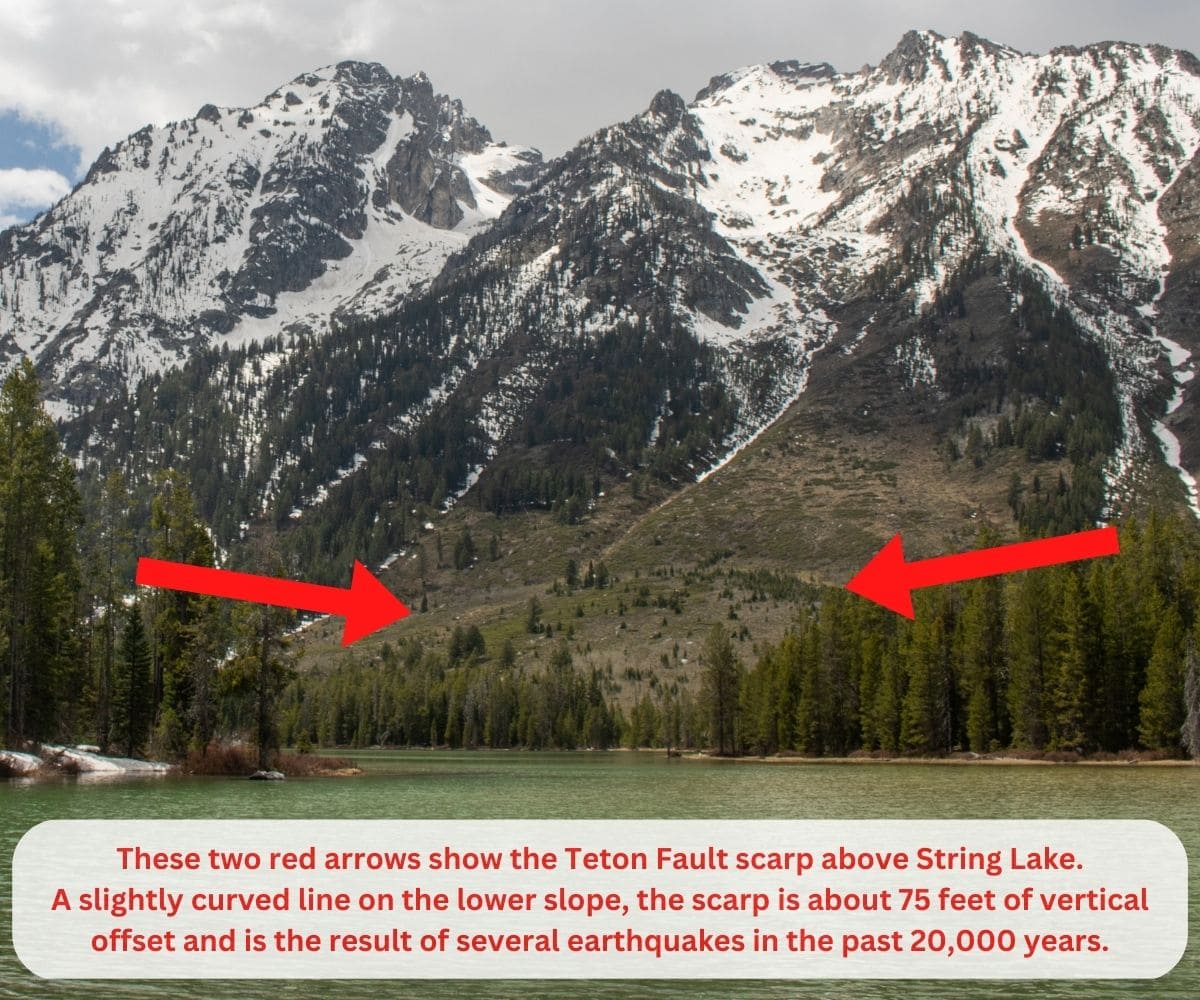
More About Grand Teton National Park
- Park Website
- Travel Guide
- Topographic Map
- Best Grand Teton Hikes
- Top Things To Do in Grand Teton National Park
- Where to See Wildlife in Grand Teton National Park
- Best Places to See Bears in Grand Teton National Park
- Accommodation
Grand Teton Mountain Range Names
Although the Tetons are a relatively small mountain range, they’re among the most spectacular mountains in America.
The Teton Range is unique in the sense that you can essentially see the entire range in one panoramic view. Many viewpoints scattered throughout Grand Teton National Park provide full views of the sensational series of jagged Teton peaks.
These are the names of the tallest Grand Teton peaks and their respective elevations, from south to north (or left to right in most images):
- Prospectors Mountain (11,246 feet)
- Static Peak (11,308 feet)
- Buck Mountain (11,943 feet)
- Mount Wister (11,495 feet)
- Nez Perce (11,906 feet)
- South Teton (12,519 feet)
- Cloudveil Dome (12,031 feet)
- Middle Teton (12,809 feet)
- GRAND TETON (13,775 feet)
- Mount Owen (12,933 feet)
- Teewinot Mountain (12,330 feet)
- Mount St. John (11,435 feet)
- Rockchuck Peak (11,149 feet)
- Mount Woodring (11,595 feet)
- Thor Peak (12,033 feet)
- Mount Moran (12,610 feet)
- Traverse Peak (11,056 feet)
- Eagles Rest Peak (11,263 feet)
- Ranger Peak (11,360 feet)
Below is a visual overview of the major Grand Teton mountain peaks you can see in the national park. (Note that because of their geographic location, some peaks may be behind other peaks and may not be visible from certain viewpoints.)
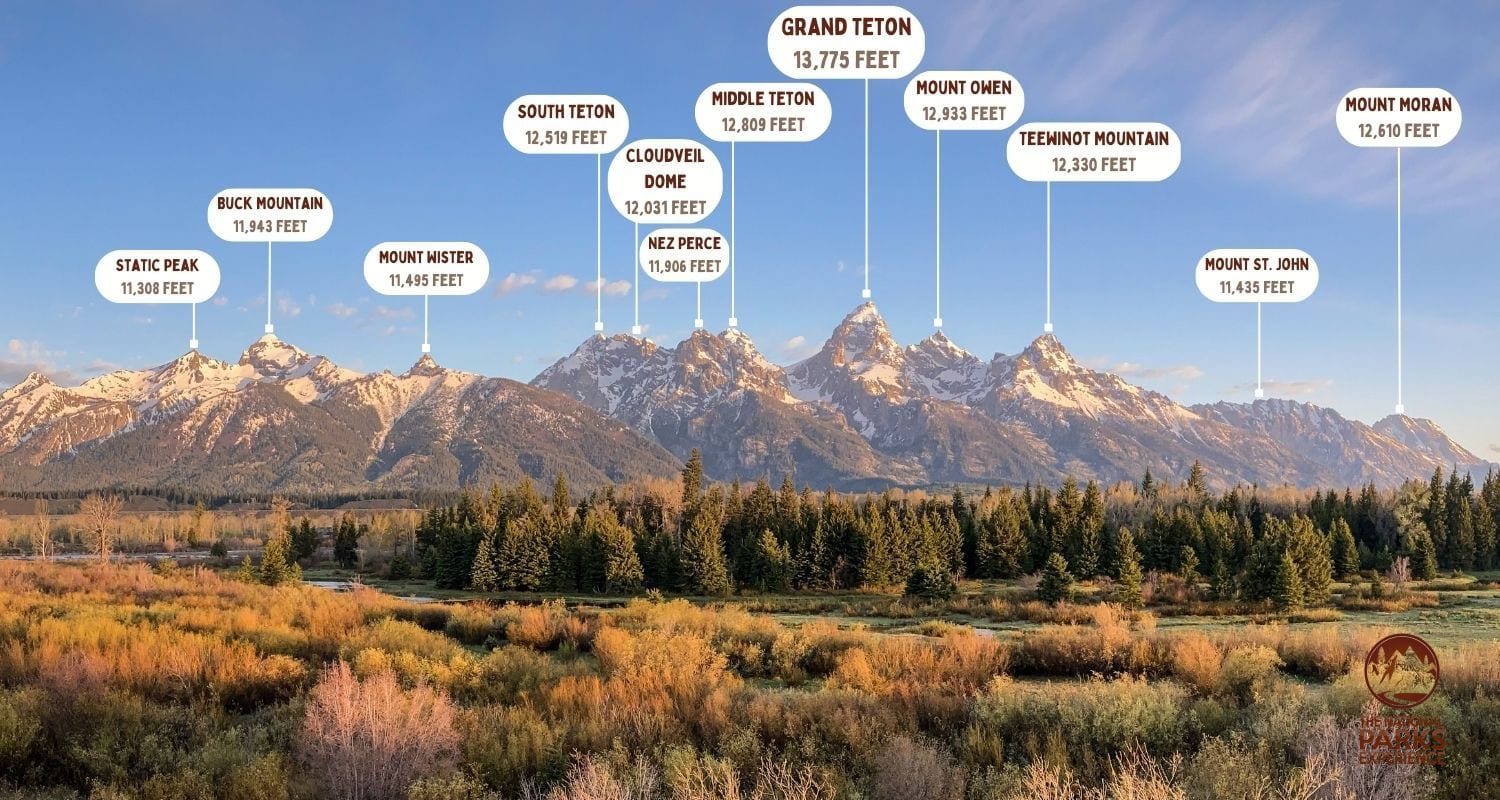
Check out this blog post for the names of major Teton Range peaks, as seen from various overlooks in the park.
Top 12 Scenic Views of the Tetons (in Grand Teton National Park)
Admiring the jaw-dropping views of the Teton Range is easily one of the most popular things to do in Grand Teton National Park. Various viewpoints, overlooks, and trails offer excellent panoramic Grand Teton views.
12. Colter Bay

Situated in the park’s northern part, Colter Bay Village is on the east shore of Jackson Lake, the largest lake in Grand Teton National Park.
This is a popular visitor area with numerous amenities and services, including a visitor center, campground, accommodations, marina, store, and hiking trails.
From Colter Bay, you can look across the shimmering water of Jackson Lake to the mighty peak of Mount Moran and the northern portion of the Teton Range.
Great hikes for views of the Tetons at Colter Bay are the Lakeshore Trail and Hermitage Point Trail.
11. Signal Mountain Lodge
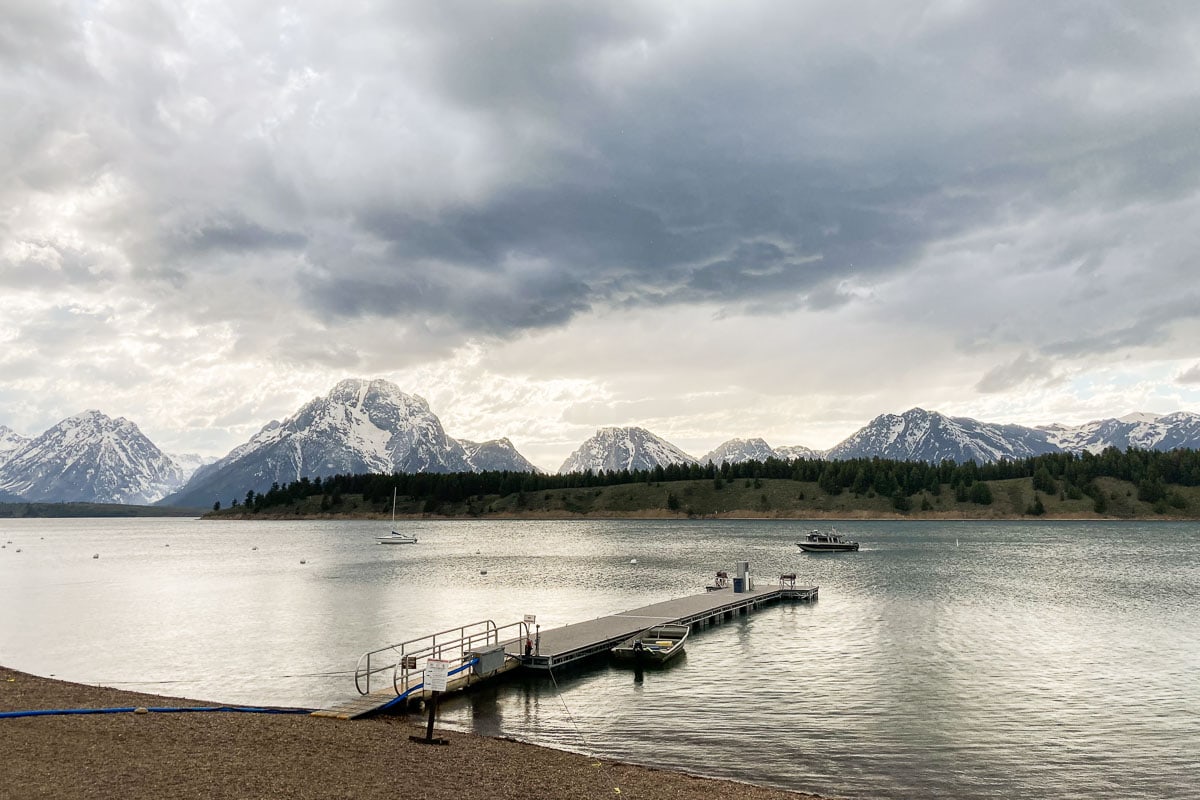
One of several lodges in Grand Teton National Park, Signal Mountain Lodge sits on the southeast shore of Jackson Lake, below its namesake Signal Mountain.
The lodge has a variety of facilities and visitor services, ranging from cabins and lakefront suites to a restaurant, bar, small grocery store, campground, boat rentals, and guided tours.
Some lodging units offer fantastic views of the Teton Range across Jackson Lake, while the marina and beach also have clear views of the mountains.
The beach at Signal Mountain Lodge, in particular, is one of my favorite places to enjoy a sunset in Grand Teton National Park—especially with a takeout dinner and drink from the restaurant .
10. Teton Park Road
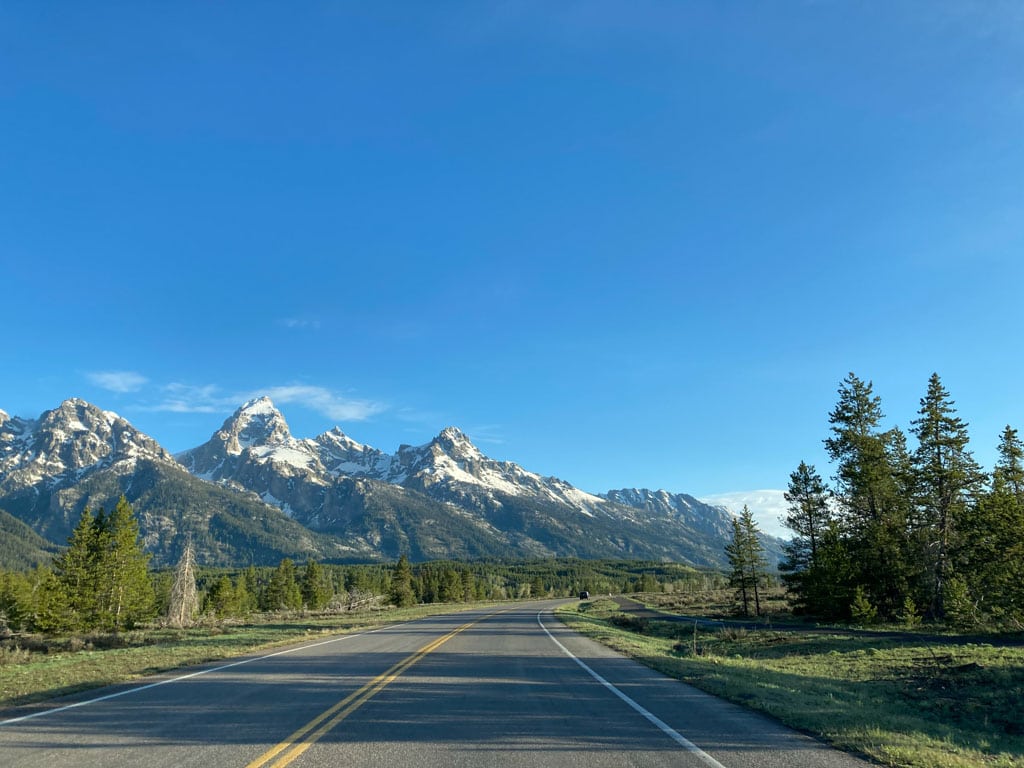
Running for 20 miles between Moose and Jackson Lake Junction, the scenic Teton Park Road parallels the Teton Range. It crosses the sagebrush flats of the western Jackson Hole valley, skirting past some of the park’s most beautiful lakes.
Along the way, there are numerous pullouts and overlooks offering magnificent views of the Tetons.
The Teton Park Road also provides access to several trails, including Lupine Meadows, the Jenny Lake Loop, String and Leigh Lakes Trail, and the Signal Mountain Trail.
Take your time driving this amazing road—one of the finest scenic drives in the national parks—and watch for wildlife along the way.
In addition to Grand Teton views, you have a good chance of seeing animals like pronghorn, deer, elk, and both black and grizzly bears here.
9. Snake River Overlook
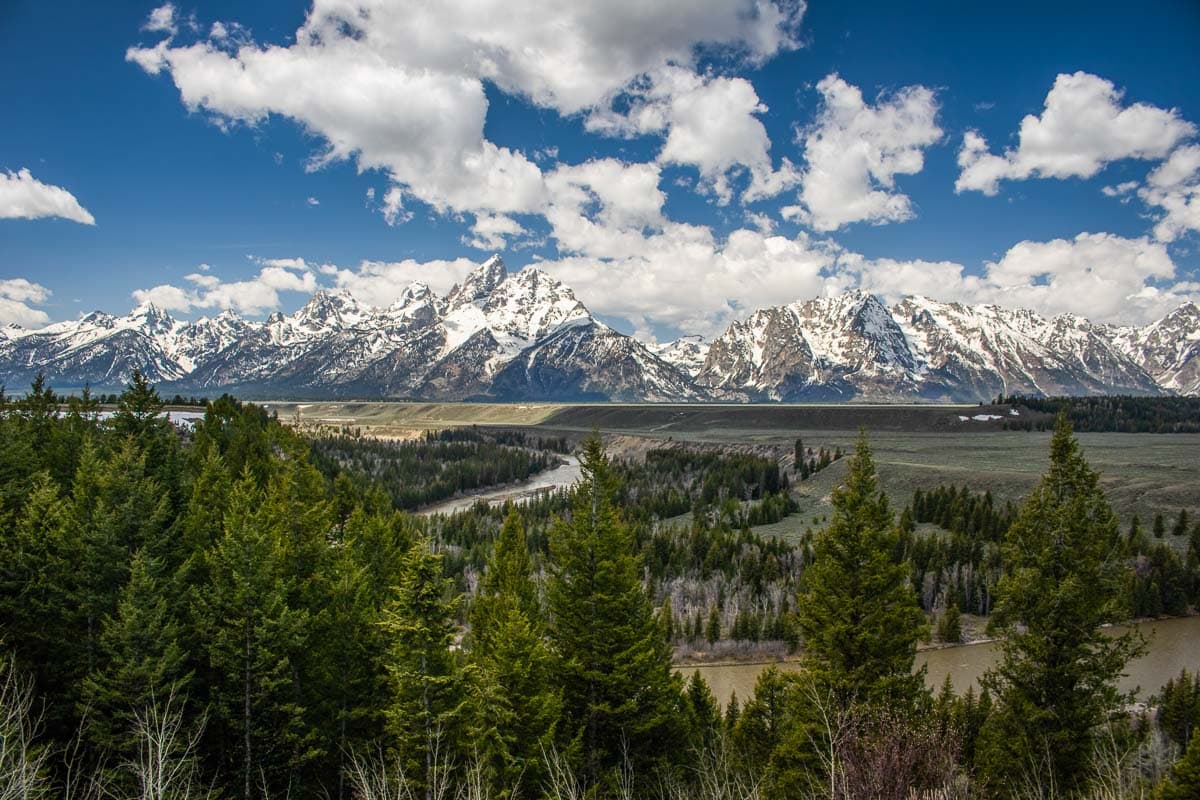
This popular overlook was made famous by none other than Ansel Adams, who “photographed the iconic view of the Teton Range and Snake River from roughly this vantage point,” the National Park Service says.
The view is, however, a bit different nowadays compared to when Adams was here. The trees, for example, are much taller, partially hiding the curves of the Snake River.
The views of the Tetons are still awesome, though, making this a place well worth stopping at when driving around Grand Teton National Park.
Fun fact: The river we now know as the Snake River has had several different names throughout history. According to the National Park Service, former names include the Lewis River (after Meriwether Lewis), ‘La Maudite Riviere Enragee’ (The Accursed Mad River by French fur trappers), the Mad River, and Sho-sho-ne-pah (by Shoshone Indians). That last name eventually led to its modern name—the Shoshone people were also known as the Snake people.
8. Jackson Lake Dam
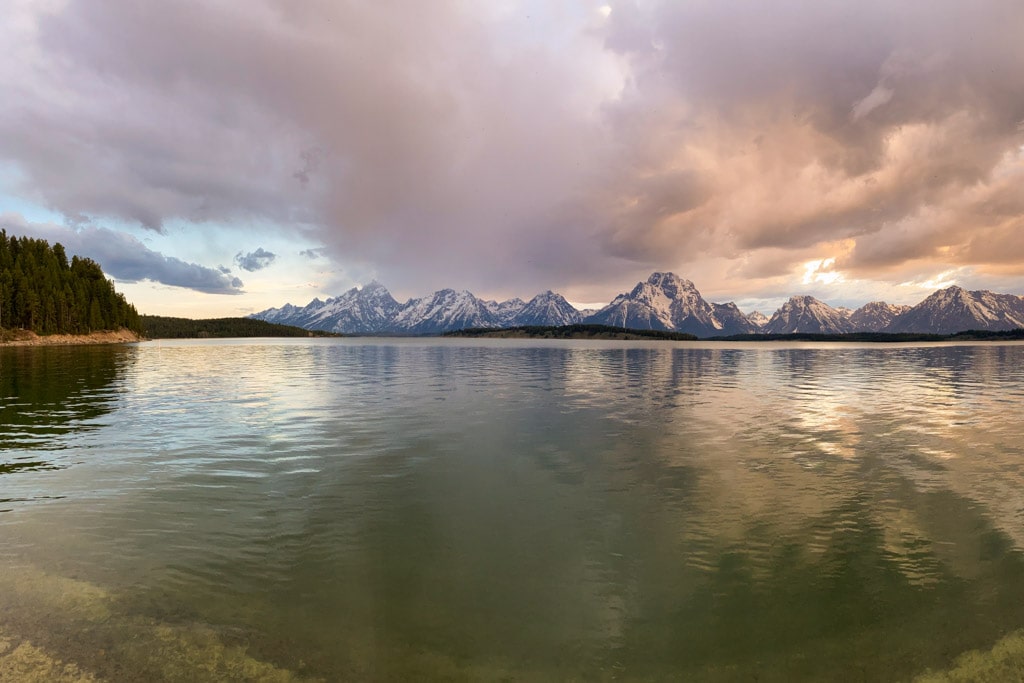
By far the biggest lake in Grand Teton National Park, Jackson Lake is a natural lake that got even larger (and deeper) when the Jackson Lake Dam was built in the early-1900s.
The dam was constructed more than a decade before Grand Teton became a national park in 1929. Its purpose was to create a reservoir for the Minidoka Project, which supplies irrigation water from the Snake River to farmlands in Idaho.
The Snake River re-emerges from the Jackson Lake Dam, flowing approximately 800 miles through Wyoming, Idaho, Oregon, and Washington to its mouth in the Columbia River.
You can walk across the length of the Jackson Lake Dam, which is also a very popular fishing area, especially in the Snake River just below the dam.
From the dam itself, there’s a superb panoramic view of the Teton Range. It’s a great place for both sunrise and sunset watching.
If you’re enjoying the sunrise from the Jackson Lake Dam area, I recommend looking around you, too. Wildlife is often present here at dawn. I’ve seen herds of elk and a grizzly bear here.
7. Signal Mountain Summit
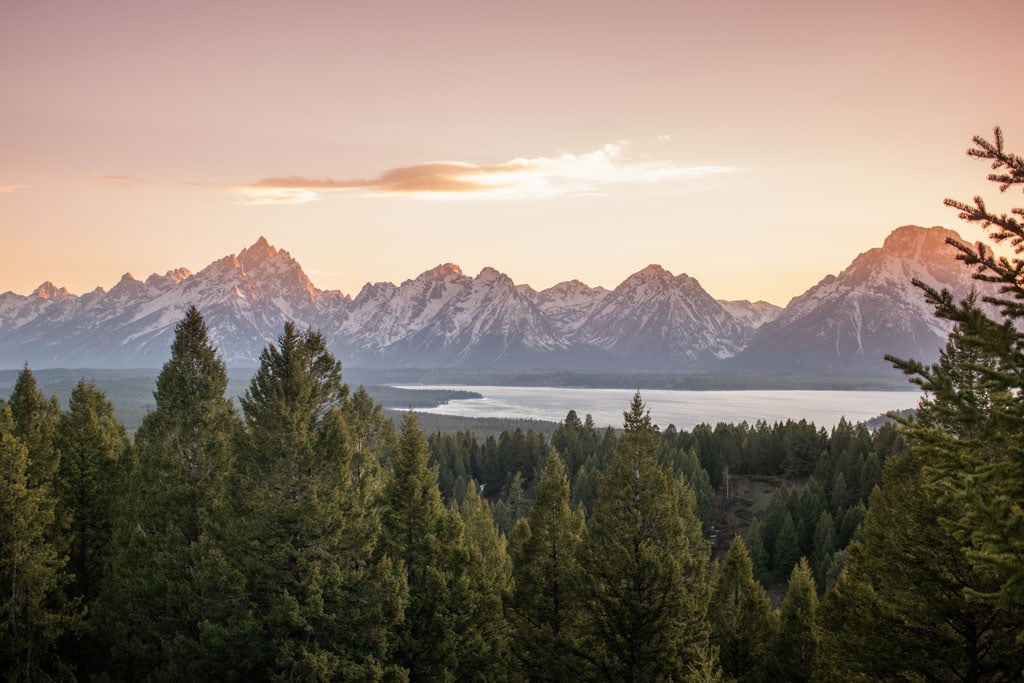
With an elevation of 7,727 feet, Signal Mountain isn’t nearly as high as the major peaks of the Grand Teton mountain range. However, Signal Mountain isn’t part of the Teton Range. It’s a separate mountain in Jackson Hole.
Thanks to its location in the valley, the summit of Signal Mountain is a great place for panoramic vistas of basically the entire national park.
Looking to the east and south, you can see the Jackson Hole valley’s sprawling sagebrush plains, shimmering ponds, and dense forests.
Turn west, on the other hand, and the views of the Teton Range are sure to leave an impression. The panorama takes in a part of Jackson Lake, as well as many of the tallest peaks of the Tetons.
You can get to the summit of Signal Mountain in two different ways. The easiest way is driving the Signal Mountain Summit Road, which is off of the Teton Park Road just south of Signal Mountain Lodge.
If you’re feeling like a hike, the Signal Mountain Trail is a great option—it’s one of my favorite easier hikes in Grand Teton National Park.
This wonderful trail starts at Signal Mountain Lodge and is a moderate 6.8-mile roundtrip hike to the summit. The view from the top is a fantastic reward for climbing the 8% slope and covering 980 feet of elevation gain.
When hiking the Signal Mountain Trail, keep an eye out for wildlife along the way. I’ve seen elk and various birds here, including a beautiful dusky grouse. Grizzly bears also frequent this area, so make sure to always carry bear spray, have it easily accessible, and know how to use it.
6. Willow Flats Overlook
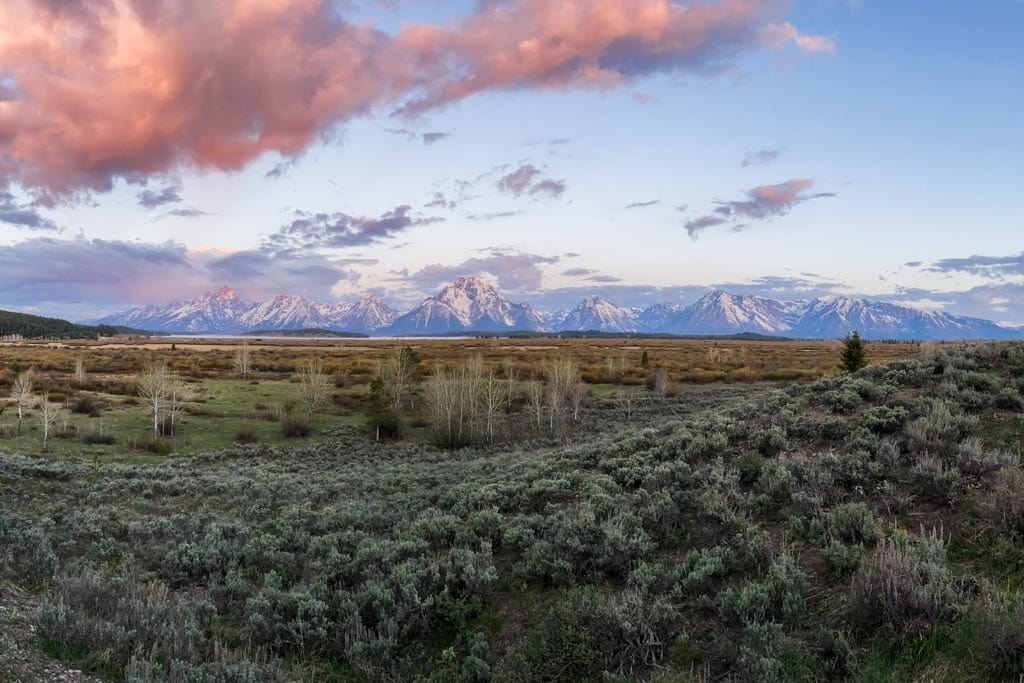
The Willow Flats Overlook is easily one of the best overlooks for panoramic views of the Teton Range. As its name suggests, this area is a lowland plain dotted with willow trees and sagebrush.
These wet meadows are home to an abundance of wildlife, particularly birds and mammals. You can often see sandhill cranes walking across the open grasslands, while elk and moose use the maze of willows for both foraging and protection.
Additionally, this is also an excellent place to see grizzly bears in Grand Teton National Park. Grizzlies come to Willow Flats to feed on bulbs and grubs, while also hunting elk calves in the spring.
Visit this area at dawn for the best wildlife viewing opportunities.
As far as Grand Teton views go, the Willow Flats Overlook surely delivers. The view across the flats and Jackson Lake toward the Teton mountains is breathtaking. It clearly shows the abrupt rise of the Teton Range from the valley, a pristine panorama of mountainous majesty.
5. String and Leigh Lakes Trail
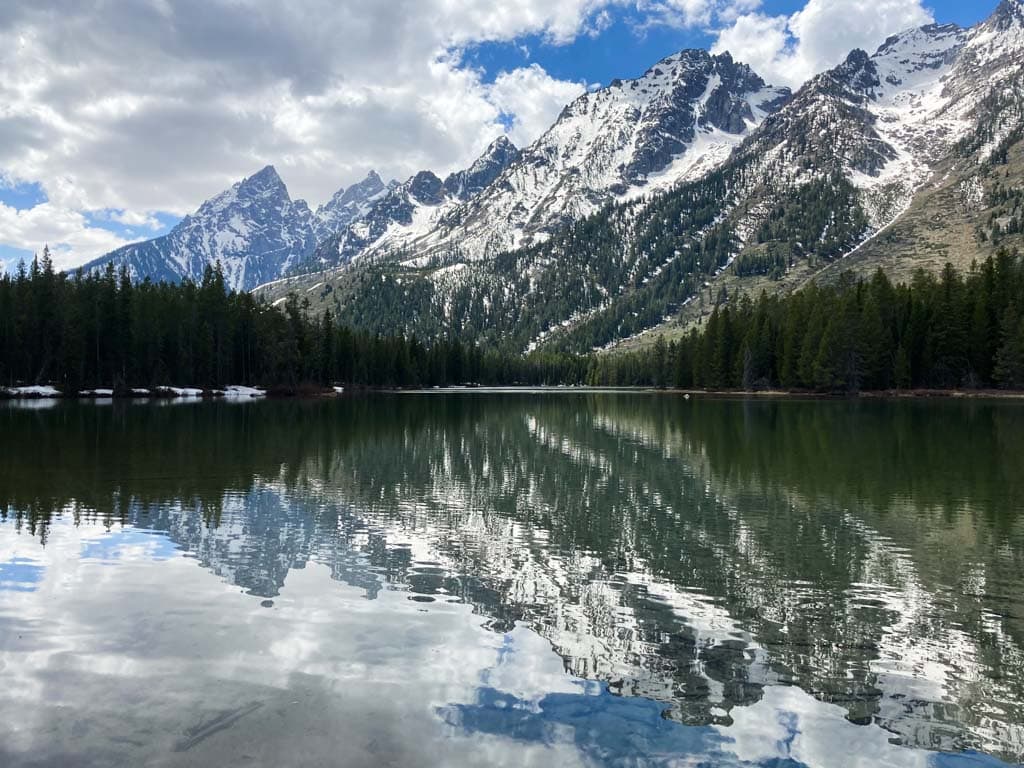
The two String and Leigh Lakes Trails offer some of the best easy hiking in the heart of Grand Teton National Park and with epic Teton mountain views to boot.
The String Lake Trail is an easy loop around String Lake, while the Leigh Lake Trail runs along the east shores of both String Lake and Leigh Lake. You can combine both trails for a longer hike.
Whichever trail you choose, it will include a section along String Lake’s east shore, where you can enjoy up-close views of the magnificent Teton Mountains across the lake.
As I mentioned above, this is one of the best places to see the Teton Fault, which is visible across and just above String Lake.
After a short distance, the trail arrives at the south end of Leigh Lake, where you can opt to either continue along the Leigh Lake shoreline or loop counterclockwise back around String Lake.
String Lake is also a fun place to launch a canoe or kayak and enjoy the Teton views from the water.
4. Chapel of the Transfiguration
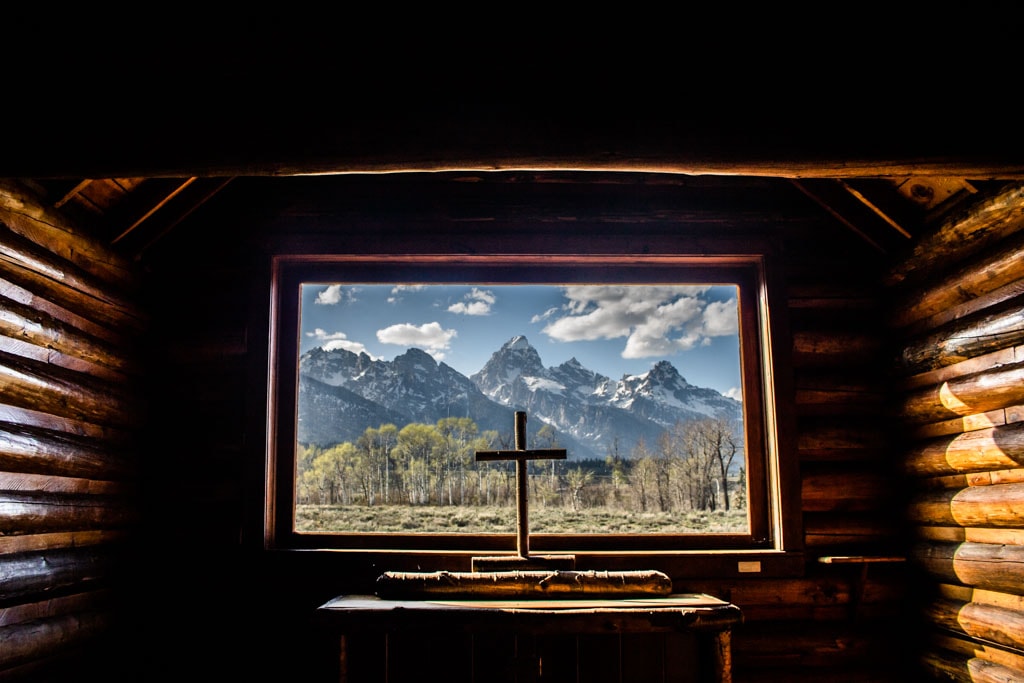
Part of Grand Teton’s Menor’s Ferry Historic District, the picturesque Chapel of the Transfiguration was built in the 1920s so that settlers, ranchers, and guests of Jackson Hole dude ranches wouldn’t have to go all the way to Jackson to attend church.
Today, the chapel still is a house of worship with regular public religious services. It is also open to visitors and one of the most remarkable places to visit in Grand Teton National Park.
Walk inside to admire the church’s beautiful woodwork and, especially, the famous window behind the altar, which frames the spectacular Cathedral Group of the Teton Range perfectly.
I wouldn’t hesitate to call the view of the Tetons through the chapel’s rear window one of the coolest things to see in Grand Teton National Park. It’s almost like a framed painting or photograph.
The Chapel of the Transfiguration may seem like a minor point of interest at first, but I assure you it’s worth the visit, which is why it’s in my top 5 best views of the Grand Teton mountains.
3. Mormon Row
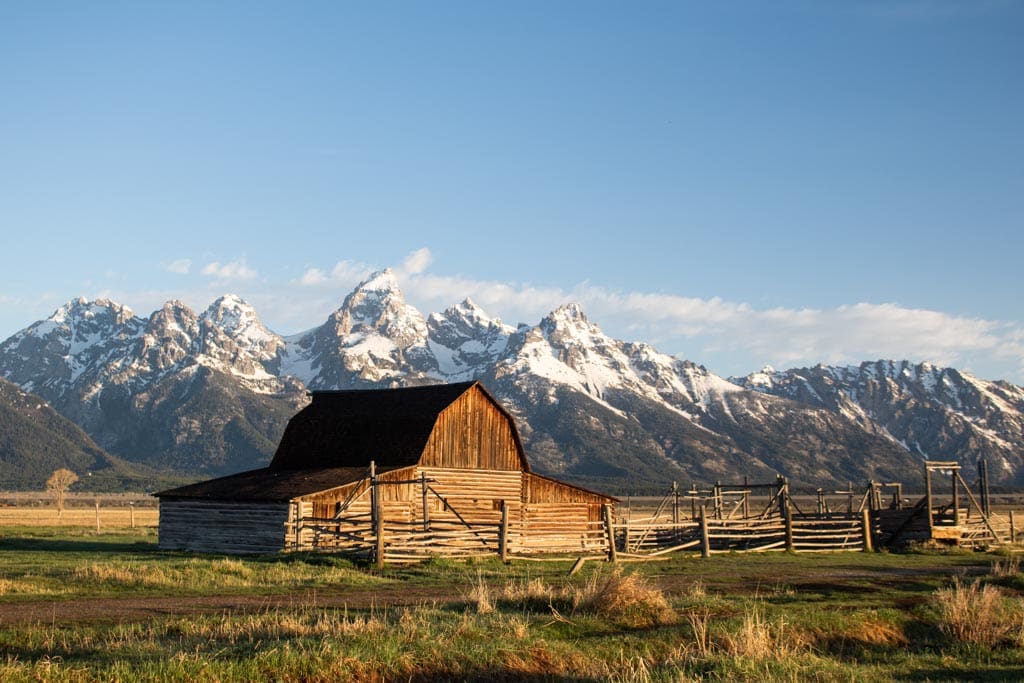
One of the top attractions in Grand Teton National Park, Mormon Row is along the Antelope Flats Road in the park’s southeastern corner.
Originally a late-19th-century settlement established by Mormon ranchers, the site now encompasses six groups of buildings and homesteads.
This is where you’ll find the iconic T.A. Moulton Barn and John Moulton Barn, which adorns many photos and postcards of Grand Teton National Park.
It’s particularly scenic right after sunrise, when the low-angled sunrays paint the barn and Teton Range background in a warm morning glow.
This is a really nice area for a morning (or evening) stroll, immersing yourself in pioneer history while also enjoying some great views of the Teton mountains towering in the distance.
2. Oxbow Bend
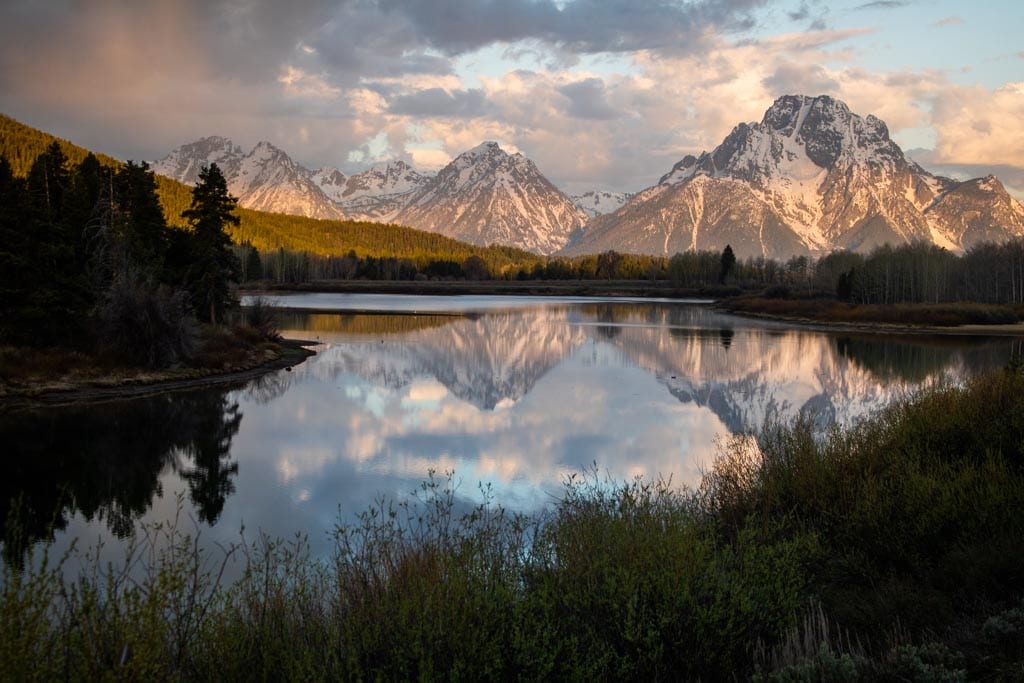
Without question of the most scenic places in the all of Grand Teton National Park, Oxbow Bend offers an extraordinary view of the Snake River and Teton Range.
It’s named after a big curve in the Snake River, “a crescent-shaped section of river lying alongside a flowing, winding river,” as the National Park Service describes it. It arguably offers the best view of the Tetons reflected in the Snake River.
The shallow shoreline, small sandbars, and islets at Oxbow Bend are prime wildlife habitat, too. It’s a fantastic place for bird watching in the park, including species like bald eagles, osprey, great blue herons, and pelicans.
Muskrats and river otters are occasionally seen in the river, while land mammals like moose and bears forage along the riverbanks.
The view is sensational here throughout the day. However, if you’d like to see (and photograph) the famous reflection of Mount Moran in the river, you should come here at dawn when the water is at its calmest.
1. Blacktail Ponds Overlook
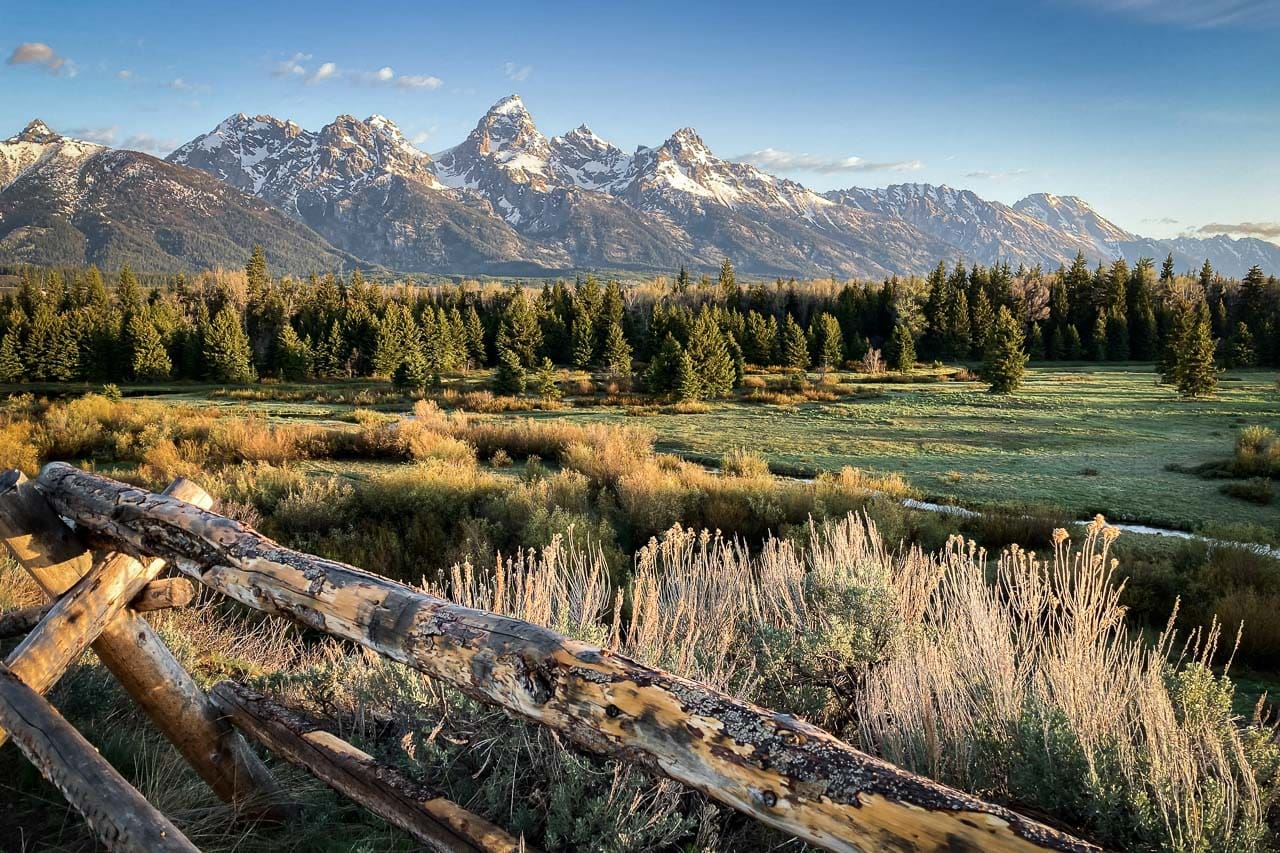
Often skipped by visitors who head to more well-known viewpoints like Willow Flats or Oxbow Bend, I personally consider the Blacktail Ponds Overlooks to be one of the top places for views of the Tetons.
It is, in fact, my personal favorite view of the Teton mountains.
This amazing overlook is about a mile north of Moose Junction on Route 26/89/191.
It’s also just north of Antelope Flats Road, which leads to Mormon Row (see above), allowing you to easily combine two awesome Grand Teton Range views in one visit.
Old beaver ponds, the Blacktail Ponds are now almost filled with sediment, surrounded by lush marshy meadows and patches of trees.
This watery environment attracts elk and deer, while beavers continue to build dams, keeping the area wet and vegetation fresh. It’s also one of the best places to see moose in Grand Teton National Park.
I absolutely love the view from this overlook. It’s especially beautiful early in the morning, when the first sunrays cast long shadows across the meadows below and light up the peaks of the Tetons beyond.
That’s not to say the Blacktail Ponds Overlook isn’t awesome any other time of the day, though. The view is always spectacular—certainly a deserving number one on this list of best views of the Tetons in Grand Teton National Park.
Map of the Best Views of the Tetons (in Grand Teton National Park)
This map shows the physical locations of all the Teton Range viewpoints described above.
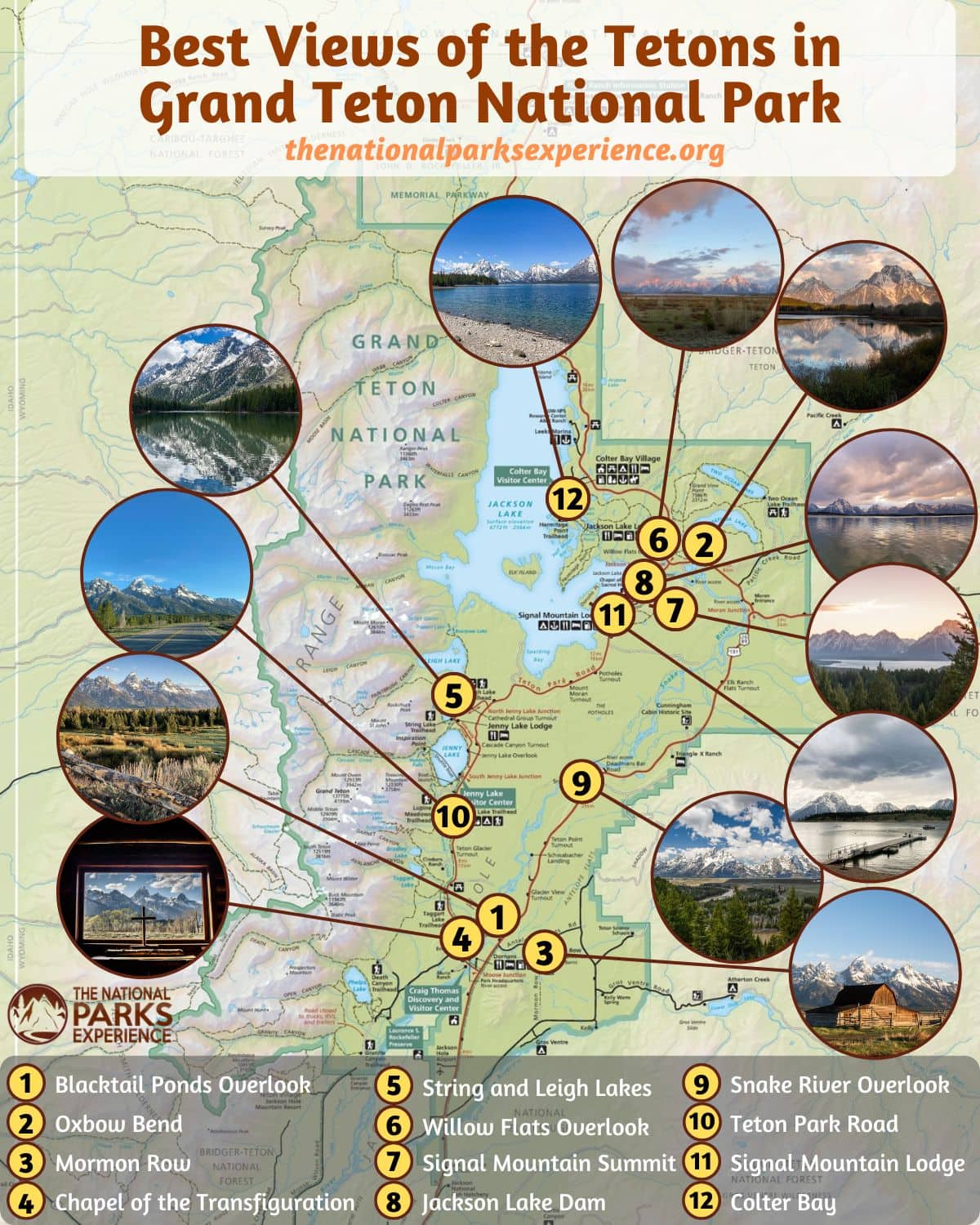
Other Scenic Views of the Teton Mountains
There are a few other scenic Teton Range views in the park besides those highlighted above. You’ll find them at the following places:
- Jenny Lake Loop Trail
- Jenny Lake Scenic Drive
- Schwabacher Landing
Accommodation in Grand Teton National Park
A number of historic and rustic lodges dot Grand Teton National Park, some of which provide amazing views of the Tetons, as I outlined above. Click the links below for more information, opening dates, availability, and rates.
If you’d like to go camping instead, you can pick and choose between no fewer than half a dozen campgrounds. Scattered across the park and often close to popular trails and viewpoints, they’re the perfect places to have an immersive Grand Teton National Park experience.
You can find more details about Grand Teton campgrounds on the park’s website.
What Are Your Favorite Views of the Teton Range in Grand Teton National Park? Share Your National Parks Experience and Tips Below!
More Scenic Views in the National Parks
- 9 Best Places to See Mount Rainier (in Mount Rainier National Park)
- 5 Stunning Views of Crater Lake
- 10 Jaw-Dropping Views in Hawai’i Volcanoes National Park
- 20 Overlooks and Summits in Shenandoah National Park
- 12 Incredible Views in Acadia National Park
- 6 Scenic Views in Death Valley National Park
- All 16 Overlooks in Badlands National Park
- 10 Best Scenic Views in Zion National Park





